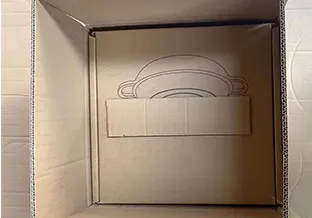
why do they call it a dutch oven
Why Do They Call It a Dutch Oven?
The term Dutch oven brings to mind a beloved cooking vessel used for centuries. It’s a heavy, typically cast iron pot with a tight-fitting lid that has found its way into kitchens around the globe. But have you ever wondered why it bears the name Dutch? The answer is as rich and layered as the meals it helps create, steeped in history, culture, and a bit of culinary evolution.
The origins of the term can be traced back to the 18th century. Dutch craftsmen were known for their exceptional ability to produce high-quality cast iron cookware. They developed a unique method of casting metal in sand molds, which allowed for the creation of heavy, durable pots. This craftsmanship became synonymous with the Netherlands, and soon, the cooking pots they made gained popularity throughout Europe.
Why Do They Call It a Dutch Oven?
Another interesting tale surrounds the use of the Dutch oven in American history. These pots were instrumental during the westward expansion of the United States. Pioneers traveling across the country relied heavily on Dutch ovens for their versatility and durability. They could be used to bake, stew, or fry, making them an invaluable tool for settlers accustomed to cooking over open fires. The significance of the Dutch oven was especially pronounced during this period, as it allowed families to prepare hearty meals no matter their location.
why do they call it a dutch oven

Moreover, the Dutch oven's design facilitates slow cooking, which is not only ideal for stews and roasts but also allows for tenderizing tougher cuts of meat. This attribute made it particularly appealing to those traveling in the rough terrains of early America, where food preparation needed to be efficient and the results nourishing.
In addition to its practical use, the Dutch oven holds a special place in communal cooking traditions. Many cultures around the world have similar pots—often named differently but serving the same purpose. The pot goes beyond mere functionality; it's a social catalyst, bringing families and communities together over shared meals. In some cultures, the communal nature of certain dishes prompts the use of a large Dutch oven, where a single meal can be prepared for many at once.
In modern kitchens today, Dutch ovens are celebrated not just for their historical charm, but also for their versatility and durability. They are favoured by both amateur cooks and professional chefs alike for their ability to retain heat and moisture, transforming even the simplest ingredients into delicious dishes. Moreover, many contemporary Dutch ovens come with modern innovations, such as non-stick surfaces and enameled finishes, making them even more user-friendly.
The legacy of the Dutch oven endures, often appearing in cookbooks, culinary schools, and even trendy restaurants. With the resurgence of interest in classic cooking techniques and outdoor culinary adventures, the Dutch oven has become a staple in both home kitchens and campsites.
In conclusion, the term Dutch oven encapsulates a combination of history, cultural exchange, and culinary expertise. Its name honors the exceptional craftsmanship of Dutch artisans while embodying the spirit of communal cooking and the practical ingenuity needed for survival and nourishment in diverse environments. As we continue to enjoy meals prepared in these iconic pots, we carry forward a rich tradition that connects us with our past and fosters togetherness around the dinner table. While the origins of the Dutch oven are tied to a specific time and place, its influence spans across cultures and generations, truly making it a timeless kitchen essential.
-
Season Cast Iron Perfectly with GPT-4 Turbo TipsNewsAug.01,2025
-
High Quality Cast Iron Cookware - Baixiang County Zhongda MachineryNewsAug.01,2025
-
Premium Cast Iron Pan: Durable & Perfect HeatNewsAug.01,2025
-
High Quality Kitchen Durable Black Round Cast Iron Cookware Pancake Crepe Pan-Baixiang County Zhongda Machinery Manufacturing Co., Ltd.NewsAug.01,2025
-
Cast Iron Cookware - Baixiang County Zhongda Machinery | Nonstick, Heat ResistanceNewsAug.01,2025
-
High Quality Kitchen Durable Black Round Cast Iron Cookware - Baixiang County Zhongda Machinery | Non-Stick, Heat Retention, DurableNewsJul.31,2025


